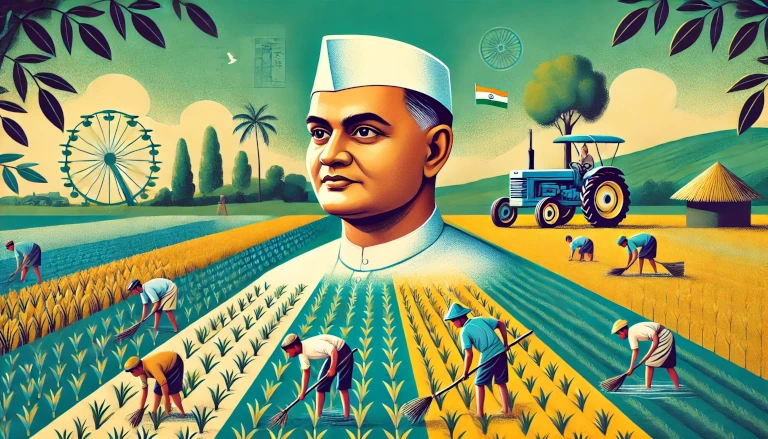Dr. Rajendra Singh, popularly known as the Waterman of India, is a renowned environmentalist and water conservationist who has dedicated his life to reviving rivers and restoring water resources in drought-prone areas of India. His work in the field of water management, particularly in the state of Rajasthan, has transformed lives and landscapes, making him a national and global figure in water conservation efforts.
In this blog post, we will explore Dr. Rajendra Singh’s contributions to water conservation, his innovative methods, and the profound impact he has had on rural communities. His story serves as an inspiring example of how one individual can make a significant difference in preserving natural resources for future generations.
Who is Dr. Rajendra Singh? 🌿💧
Dr. Rajendra Singh is an Indian environmentalist who has been tirelessly working to address water scarcity and river rejuvenation in India for over three decades. Born in 1959, he became deeply aware of the devastating effects of drought on rural communities early in his career as a health worker. His commitment to water conservation led him to develop techniques that have restored rivers, improved agricultural productivity, and helped rural communities become more resilient to drought.
For his pioneering work, Dr. Singh has received numerous awards, including the prestigious Stockholm Water Prize in 2015, often referred to as the Nobel Prize for water.
The Innovative Water Conservation Methods of Dr. Rajendra Singh 🚜💧
Dr. Rajendra Singh is best known for reviving the traditional water conservation practice of Johads, small earthen dams built to collect and store rainwater. By reviving these ancient techniques, Dr. Singh has successfully rejuvenated rivers, restored groundwater levels, and transformed barren lands into fertile agricultural fields. His approach focuses on community-led water management, which empowers local villagers to take control of their water resources.
1. Johads and Water Harvesting Structures 🌧️🛠️
One of the main methods Dr. Singh uses is the construction of Johads, which are simple yet highly effective water harvesting structures. These earthen check dams collect rainwater and allow it to seep into the ground, replenishing the water table and providing year-round water availability for irrigation and domestic use.
- Example: In the Alwar district of Rajasthan, where water scarcity was once a major issue, Dr. Singh and his team built more than 8,600 Johads, which have helped revive rivers such as the Arvari and Ruparail. These water bodies, once dry, now flow year-round, supporting agriculture and drinking water needs.
2. River Rejuvenation 🌿🌊
Dr. Rajendra Singh’s efforts have led to the rejuvenation of several rivers in Rajasthan. His approach involves building check dams to capture and conserve rainwater, preventing soil erosion, and improving groundwater recharge. By engaging local communities in river conservation, he has helped restore rivers that were once on the brink of disappearance.
- Example: The revival of the Arvari River, which had dried up in the 1940s, is one of Dr. Singh’s most notable achievements. His water conservation efforts have brought life back to the region, transforming it into a green and fertile area.
3. Community Empowerment 🌍🙌
A key element of Dr. Singh’s success is his emphasis on community involvement. He works closely with villagers, encouraging them to take ownership of their local water resources. By promoting the idea of self-sufficiency, he empowers communities to maintain water conservation structures and make sustainable use of available resources.
The Impact of Dr. Rajendra Singh’s Work on Rural Communities 🌾💧
Dr. Singh’s work has had a profound impact on rural communities, particularly in Rajasthan, one of the driest states in India. His water conservation efforts have led to:
1. Increased Water Availability 🚰🌧️
The revival of rivers and the construction of Johads have greatly improved water availability for both drinking and irrigation purposes. In regions that once suffered from severe water shortages, villagers now have access to reliable water sources throughout the year.
2. Improved Agricultural Productivity 🌾🚜
With more water available, farmers in the regions where Dr. Singh has worked are able to grow multiple crops per year, improving agricultural productivity and ensuring food security. This has led to a significant improvement in livelihoods and economic conditions for these communities.
3. Environmental Restoration 🌍🌱
Dr. Singh’s work has not only helped humans but also contributed to the restoration of ecosystems. Rivers that had dried up and caused environmental degradation are now flowing, supporting wildlife and promoting biodiversity.
Recognitions and Awards 🏆🌍
Dr. Rajendra Singh has received many prestigious awards for his dedication to water conservation and environmental work:
- Stockholm Water Prize (2015): Often called the “Nobel Prize for Water,” this award recognized Dr. Singh’s significant contributions to water resource management.
- Ramon Magsaysay Award (2001): This award acknowledged his leadership in environmental sustainability and community empowerment.
- Jamnalal Bajaj Award (2019): He was honored for his efforts in promoting rural development and ecological balance.
Real-World Example: The Arvari River Parliament 🌊👥
One of Dr. Singh’s most innovative achievements is the creation of the Arvari River Parliament, a community-led governance system designed to manage the Arvari River. Local villagers are responsible for deciding how the water will be used, ensuring that it is shared fairly and sustainably among all. This democratic approach to water management has become a model for community-based resource management across India.
How We Can Learn from Dr. Rajendra Singh’s Efforts 🌿🌧️
Dr. Rajendra Singh’s work teaches us the importance of sustainable water management and the value of traditional knowledge in solving modern problems. Here are a few lessons we can take from his efforts:
- Reviving traditional methods: Ancient practices like Johads can be effective solutions for modern water challenges.
- Community involvement: Engaging local communities in environmental efforts ensures long-term success and sustainability.
- Water conservation: By prioritizing water conservation in our daily lives, we can reduce our ecological footprint and ensure that future generations have access to this vital resource.
The Legacy of the Waterman of India 💧🌍
Dr. Rajendra Singh’s extraordinary work as the Waterman of India has transformed the lives of countless people by addressing water scarcity and reviving rivers. His innovative water conservation techniques and community-driven approach offer a sustainable model for water management that can be replicated around the world.
As we face growing challenges related to climate change and water scarcity, Dr. Singh’s work serves as a reminder of the critical role that each of us can play in protecting our natural resources. By following his example, we can create a future where water is conserved, ecosystems are restored, and communities thrive.
Discover more from Green Ecosystem - Renewable Energy, Agriculture, and Environmental Sustainability
Subscribe to get the latest posts sent to your email.


